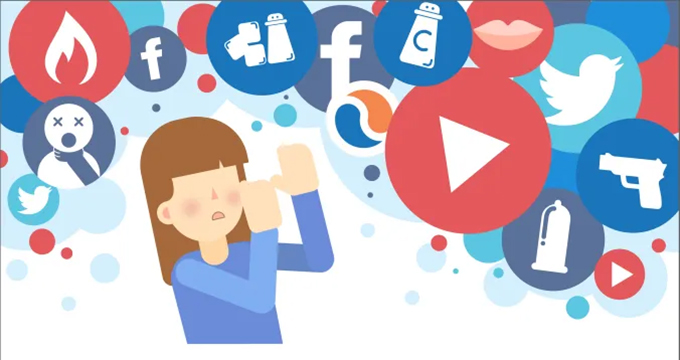
Viral social media trends started innocently enough.
In the early 2010s there was planking, the “Harlem Shake” dance and lip syncing to Carly Rae Jepsen’s summer anthem “Call Me Maybe.”
Then came the ice bucket challenge, which raised an estimated US$115 million for ALS research.
In recent years, social media challenges have grown more popular – and more dangerous, leading to serious injuries and even deaths. It’s not hard to see why. The milk crate challenge dares people to walk or run across a loosely stacked pyramid of milk crates, the Tide pod challenge involves eating laundry detergent pods, and the Benadryl challenge encourages taking six or more doses of over-the-counter allergy medication all at once.
As clinical psychology researchers, we study why social media challenges are so appealing to teens despite the dangers they pose, and steps parents can take to protect their kids.
Appeal of viral stunts
Almost all American teens today have access to a smartphone and actively use multiple social media platforms – with YouTube, TikTok, Instagram and Snapchat being the most popular among this age group.
Meanwhile, the teenage years are linked to an increase in risk-taking. The human brain isn’t fully developed until a person reaches their mid-20s, and the parts of the brain that relate to reward and doing what feels good develop more quickly than areas linked to decision-making. As a result, teens are more likely to act impulsively and risk physical injury to gain popularity.
Teens are also particularly vulnerable to social pressure.
A 2016 study found that teens were more likely to “like” a photo – even when it showed drug or alcohol use – if the photo had more “likes” from peers. The same study also showed that activity increased in the reward centers of teenage brains when viewing posts with more “likes.” Simply put, teens pay closer attention to social media content with a high number of “likes” and views.
In best-case scenarios, this vulnerability to social pressure may result in, say, buying a certain brand of sneakers. Yet in worst-case scenarios, this can lead teens to do dangerous stunts to impress or amuse their friends.
In our work, we found that celebrities, musicians, athletes and influencers can also increase risky teen behaviors, such as alcohol and drug use, especially because they earn many “likes” and attract huge followings on social media.
Teens today may find it more difficult to resist social pressure. They not only have unlimited access to their peers and other influencers, but online social networks are also much larger, with teens following hundreds – sometimes thousands – of online users.
What parents can do
Below are five ways parents can help their teen resist social pressure and avoid risks linked to social media trends.
1. Listen to your teen
Parents can learn more about social media by asking their teen open-ended questions about their experiences, such as, “Has anything you’ve seen on Instagram upset you lately?”
Share your own concerns about social media while listening to your teen’s thoughts and perspectives. This kind of open communication can improve kids’ mental health and social skills.
Research also shows that watching media content with your teens – and discussing issues that come up during and after media use – helps with children’s brain development and critical thinking. It can also help to resolve questions or clear up misinformation.
2. Talk about what is rewarding
Teens don’t always know why they engage in certain behaviors or are curious about dangerous activities. Having a conversation with them about what feels good about “likes” and comments online could help them identify similar rewarding experiences offline – such as joining a school sports team or extracurricular club. Research shows that sports participation is a helpful way to build one’s social identity, self-esteem and meaningful connections with others.
3. Talk about what is risky
Social media posts often glamorize risky behaviors. For example, alcohol use posts focus on the fun aspects and avoid depictions of blackouts or injury. Similarly, teens see “likes” and views from social media challenges, but not hospitalizations and deaths.
Parents can talk to teens about this gap. Since teens are often more knowledgeable about the latest social media challenges, ask them about the topic and help them think through possible risks.
4. Get informed
One of the best ways to connect with teens is to learn about topics that interest them. If they enjoy Instagram, consider creating your own account and ask them to show you the ropes on the platform, as teaching others can be rewarding for teens. Also, take the time to explore on your own and keep up to date on social media features, challenges and risky trends.
5. Make a plan
A family media plan can help you and your teen agree on screen-free times, media curfews and ways to choose good media habits. Social media can also help teens form friendships, stay connected with distant friends and family members, reduce stress and access medical providers, help lines or other tools that support physical and mental health.
Come up with a plan that all family members can follow to enjoy the benefits of social media. Your family can always revise the media plan as your child gets older.
